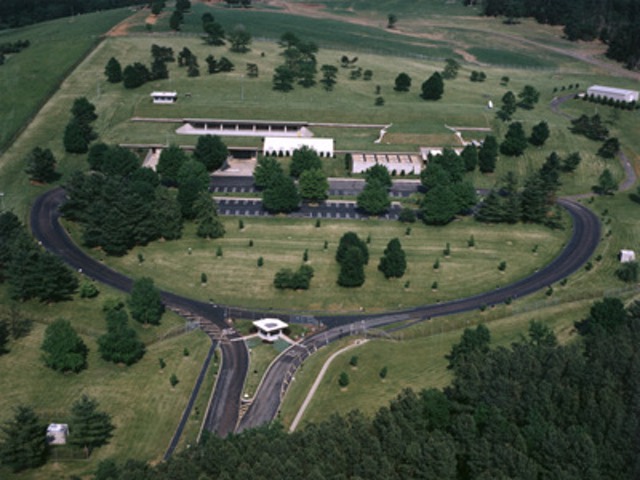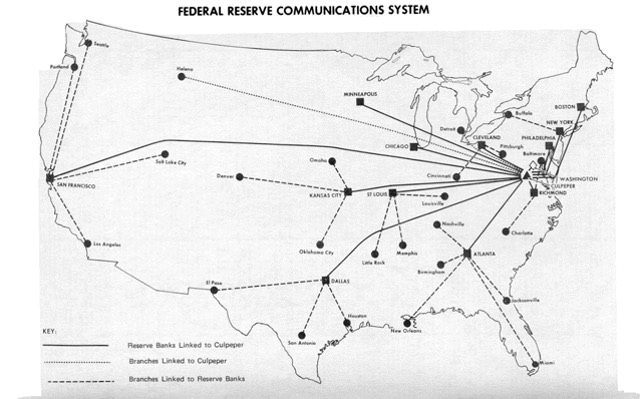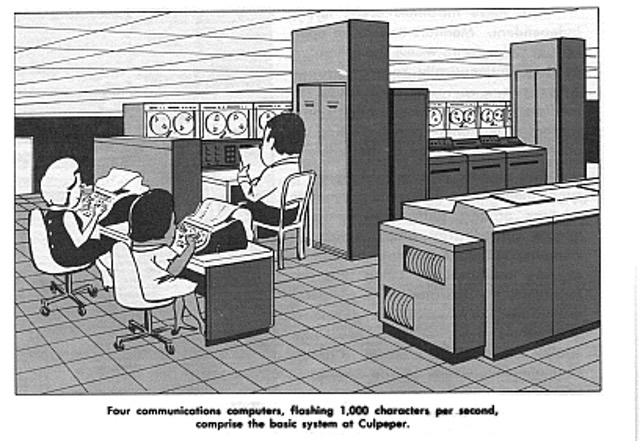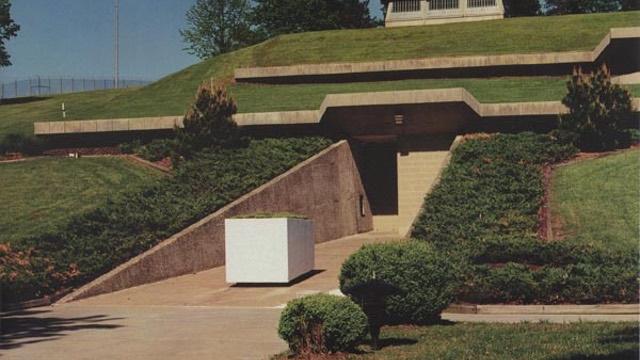New York and DC are piles of ash, but at least your cheques are clearing. That was the idea behind the Culpeper Switch, a sprawling bunker built by the US Federal Reserve to keep the banks running after nuclear apocalypse. But even some Cold War-era politicians thought it was silly.
The compound was built just outside the small town of Culpeper, Virginia, near Mount Pony, in 1969. The 12,500sqm facility was officially called the Federal Reserve System’s Communications and Records Center, and it housed about $US4 billion of American currency during the 1970s — currency sitting in what was reportedly the world’s largest single-floor vault at the time.
A bank for the end of the world
The underground compound was supposed to serve as the country’s Federal Reserve headquarters in case of a nuclear war with the Soviet Union. If things were looking particularly dicey with the Reds, a select group of Federal Reserve employees and their families were instructed to hightail it over to the Culpeper Switch.
Aside from holding an insane amount of cash, the Culpeper Switch was also the nerve center for a state-of-the art national computer network. This network, sometimes called the FedWire, would let the country’s banks talk to each other and exchange money just as they had before all-out nuclear war had reared its radioactive head.
But what good is $US4 billion in currency and a national computer network if most of the United States looks like a scene from one of the Twilight Zone‘s darker episodes? That’s what many politicians couldn’t help but ask. Despite the fact that a new executive order signed by President Nixon in 1969 explicitly called on the Fed to make just those kinds of preparations.

The Culpeper Switch as seen from the air via Brookings
In many ways, the $US6 million building (in 1969 dollars) was quite impressive. It had its own air filtration system, its own power generators, and about a month’s worth of freeze-dried food for 400 people. The facility had just 200 beds, but planners explained it would be a “hot bed” scenario, where the residents would take turns sleeping. The Culpeper Switch also had a gun range, a helicopter pad, and a cold storage area for any dead bodies that couldn’t be buried while the world was turning to shit outside.
But the facility wasn’t just for use in the post-apocalyptic future. It was actively used by the Federal Reserve to route and monitor financial transactions from America’s banks throughout the 1970s and ’80s. The building was dedicated in December 1969 and by August of the following year it was routing financial transactions between 5700 banks all around the country. By the mid-1970s it was processing 25,000 messages an hour through the facility’s four computers.
It may have been designed with the apocalypse in mind, but the Fed was going to be damned sure it got its money’s worth during those pre-apocalypse years.
Keeping the pre-internet alive
The Culpeper Switch’s computer system was a star network, meaning that it had one central hub and many distant points that connected to that hub. Contrast that with a decentralised packet-switched network like our modern internet. Packets of information on today’s internet simply find the fastest route by skipping through the most efficient path. A star network demands that information all flow to one central location.

Illustration of the Culpeper Switch’s network from a 1970s informational brochure
The internet’s decentralised nature is precisely why it was touted by some military planners as being valuable during a nuclear war. Wiping out the central hub of the Culpeper Switch meant that you could take out the entire system. So what was the Culpeper Switch’s defence against nuclear attack? Aside from being a discreet subterranean building, it was also far enough away from the East Coast’s major cities. But not so far away that they couldn’t operate within the country’s major communications infrastructure.
At the dedication of the building in 1969, the vice chairman of the board of governors of the Fed, J. L. Robertson, explained that his rural hometown of Broken Bow, Nebraska was even considered as a site for the doomsday centre. But a town close to Richmond, Virginia simply made more sense. “Culpeper was selected because it has no foreseeable target vulnerability,” Robertson said. “It was selected because it is accessible to the protected long distance lines of the major commercial communication systems that serve all parts of the country.”
But he left out one important feature.
A few lonely radioactive government officials
The part Robertson forgot to mention? Putting it somewhat close to the major cities in the East might also give those top Fed officials and their families a chance to get to the bunker in time. But Robertson was not shy in his remarks about using words like “postattack” and “nuclear weapons.”
“It has been generally recognised in military and defence planning circles that one of the most important requisites for effective decentralised operation in an emergency is a communications system capable of surviving enemy attack,” Robertson said in 1969. “When we complete the movement of emergency supplies to this vault, our goal will have been met and this facility will have made another significant contribution to the System and the defence of the nation.”

Illustration of the Culpeper Switch’s computers from a 1970s informational brochure
Though the compound was well-known in the banking community (for obvious reasons), it wasn’t until the mid-1970s that the Culpeper Switch started to gain national attention in the press. And once it made headlines, not everybody thought that the Culpeper facility was a great idea. Senator William Proxmire of Wisconsin painted a picture wherein we’d have billions of dollars in bills and just a handful of people.
“The Culpeper facility is in effect a huge subterranean mattress, stuffed with about $US4 billion in newly printed bills of all denominations,” Proxmire said in 1976. “Under this doomsday scenario we would have $US4 billion in cash and no people except a few lonely radioactive government officials.”
So what’s going on at the Culpeper Switch today? The Federal Reserve moved out in the early 1990s. And after an unsuccessful attempt to sell it on the private market (shockingly, nobody wanted an underground bunker for their corporate offices), the building was sold to the Library of Congress.
Now known as the National Audio Visual Conservation Center, the building houses movie, TV and music recordings. It will no longer be the place that Federal Reserve bankers and their families will flee to once the bombs start dropping. But with all that media, it might now be the best place to keep yourself entertained after the world ends. You can keep your pallets of cash, I’d prefer watching a Deadwood marathon while the world burns.
